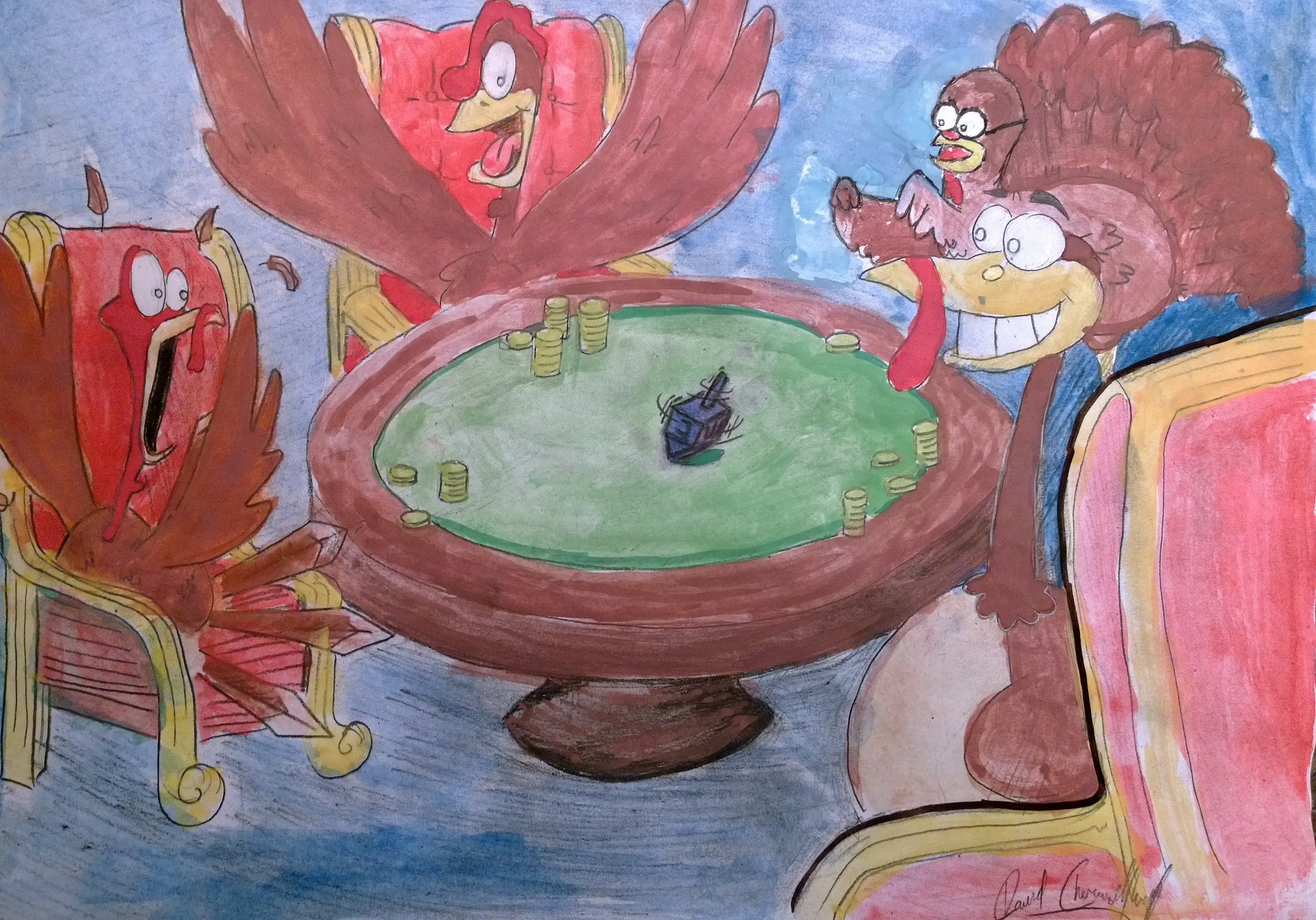Christmahanukwanzukah. Christmukah. Kwanzukah. You will not hear any of these terms this year because Chanukah does not fall on Christmas or Kwanza, but on an entirely different holiday. For the first time in many years, the second night of Chanukah coincides with Thanksgiving, creating a new celebration many have dubbed Thanksgivukah, a portmanteau of the two holiday names.
Thanksgivukah is an event that, according to most sources, will never happen again in our lifetimes, and as such, is a holiday that you definitely should not miss.
Jews everywhere are excitedly preparing ideas to merge traditions from the two holidays. The Internet is buzzing with ways to help celebrators embrace this unique experience. Many blogs and websites, such as Pinterest and BuzzFeed, are full of ideas about fun and cute ways to celebrate. Suggestions range from recipes to clothing to nail art. Nine-year-old Asher Weintraub also got into the holiday spirit with his idea to create a menorah in the shape of a turkey. He conceived, designed and named the Menurkey. The Menurkey was originally sold on crowdfunding website Kickstarter, but can now be purchased at Menurkey.com.
The Jewish calendar, which determines the dates of Chanukah and other Jewish holidays, is lunar, while the Gregorian calendar, which determines the date of Thanksgiving, is solar. There is also a leap year in the Jewish calendar that occurs seven times in a 19-year cycle, during which a month is added. For the aforementioned reasons, Chanukah and other Jewish holidays are early this year. Thanksgiving is still the fourth Thursday of November and the second night of Chanukah is still the 26th of Kislev, but this year they are the same date. Jewish dates and American dates only align every nineteen years, which would seem to tell us that Thanksgiving and Chanukah should coincide every nineteen years, but it is even more complicated.
Chanukah was declared a Jewish holiday 2,178 years ago, while Thanksgiving was declared a national holiday in 1863 by Abraham Lincoln. However, in 1939 Franklin Delano Roosevelt decided to make Thanksgiving the fourth Thursday in November instead of the last, a change only noticeable during a year with five Thursdays in November. It took a while for this to take effect and for all the states to adopt the change. In fact, Texas was still celebrating Thanksgiving a week later than the rest of the country until around 1956. Although a formal Thanksgivukah may not have been celebrated throughout the country, most sources confirm that a national Thanksgiving coincided with the first night of Chanukah in 1888 and the fifth night in 1899. However, some Texan Jewish families probably celebrated Thanksgivukah in 1945 and 1956 as well.
Whether or not Thanksgivukah will occur again is dependent on many factors, since there are several uncertainties that arise when calculating past and future Thanksgivukahs. Therefore, it is unknown exactly when or if we can break out that Menurkey ever again. If we assume that Thanksgiving will be celebrated on the fourth Thursday of November, and both the Gregorian and Jewish calendars continue on their current trajectories, then it is possible that there will be more Thanksgivukah celebrations in the distant future. However, both calendars are slowly drifting, but at different rates; the Jewish calendar is slowly getting out of sync with the solar calendar at a rate of 4 days per 1000 years. According to some sources, without modification, they will have shifted so dramatically that by 2165, Chanukah will never again fall in November.
Many theorize that Thanksgivukah will not happen again until the entire cycle of the calendars loop back in the year 79811. Some, however, would like to stay positive about the possibilities of Thanksgivukah in 2070 and 2165, and I hope that if it happens, this article will reach the candle-lighting turkey-eaters of the future. In the meantime, we can enjoy the unique holiday blend this year. For those of you who are planning your Thanksgivukah, here are some ideas to help you celebrate this unique holiday.
Decorations:
Obviously, while reading this article, you took out your smartphone and purchased your very own Menurkey. However, there is a lot more you can do to prepare your home for a great Thanksgivukah meal.
Cornucopia of gelt: Fill a cornucopia with gelt instead of fruits and vegetables and place it on your table.
Pilgrim kippah: Adorn your favorite kippah with a belt buckle.
Recipes:
Putting together a Thanksgivukah meal may prove surprisingly difficult. My family, for example, did not love the idea of simply deep-frying a traditional Thanksgiving meal. Additionally, the oily foods of the Chanukah meal combined with Thanksgiving’s heavy turkey and starches may not necessarily make for the healthiest or most digestible meal. However, Ha’Am has put together some recipes which combine aspects of the harvest holiday with aspects of the festival of lights in order to get you in the holiday spirit without the indigestion. These recipes combine some of the traditional Thanksgiving foods, such as cranberries, sweet potatoes and gravy, with some of the beloved Chanukah favorites like sufganiyot (jelly doughnuts), latkes and applesauce. Also, for any Jews who don’t formally celebrate Thanksgiving, you can try out these recipes at your weekly Friday night of “Thanksgiving,” Shabbat.
Thanksgiving without cranberry sauce is just as wrong as latkes without applesauce. Kill two birds with one stone with this delicious and easy hybrid.
Recipes:
Cranberry Applesausce
Ingredients:
- ¾ cup kosher canned whole berry cranberry sauce
- ½ cup kosher chunky applesauce
- ½ teaspoon fresh grated ginger
Prep time: 3 minutes
Directions:
Finely grate peeled ginger root. In medium-sized bowl combine cranberry sauce and applesauce; stir in ginger and serve.
For additional recipes, look in the Fall 2013 print issue of Ha’Am to help you celebrate this unique holiday. Ha’Am Fall 2013 can be picked up outside 118 Kerckhoff Hall, or at the Hillel at UCLA building on 574 Hilgard Ave.

